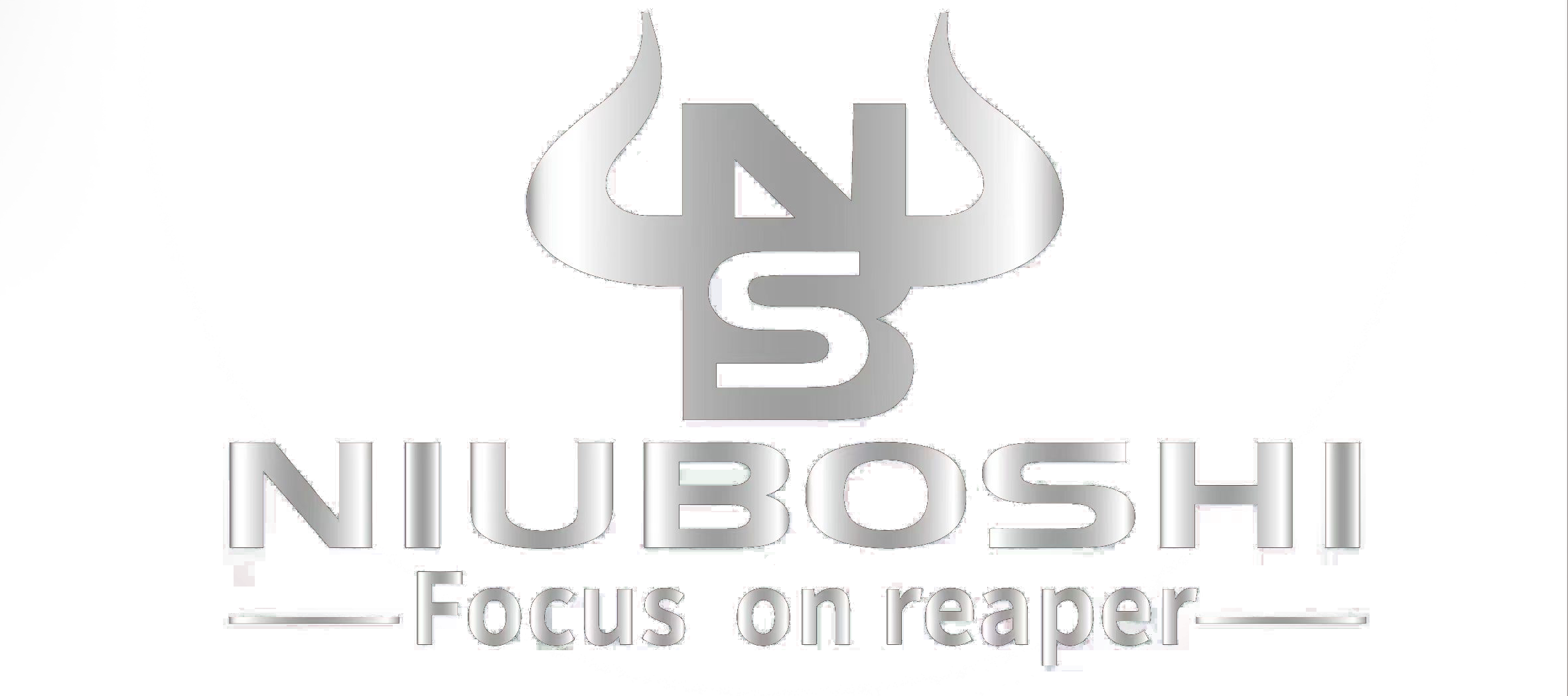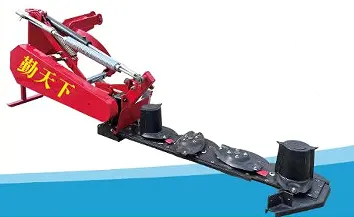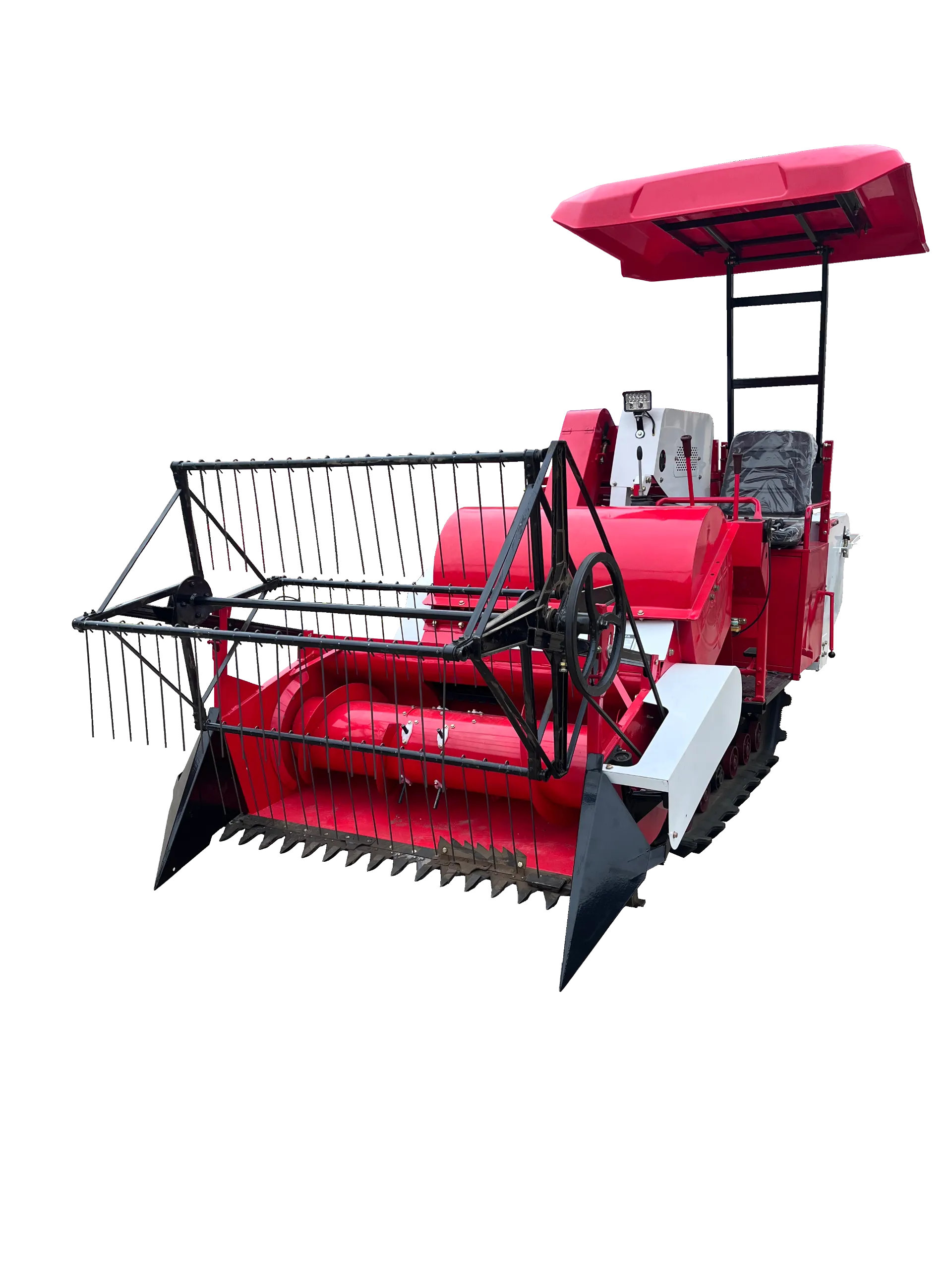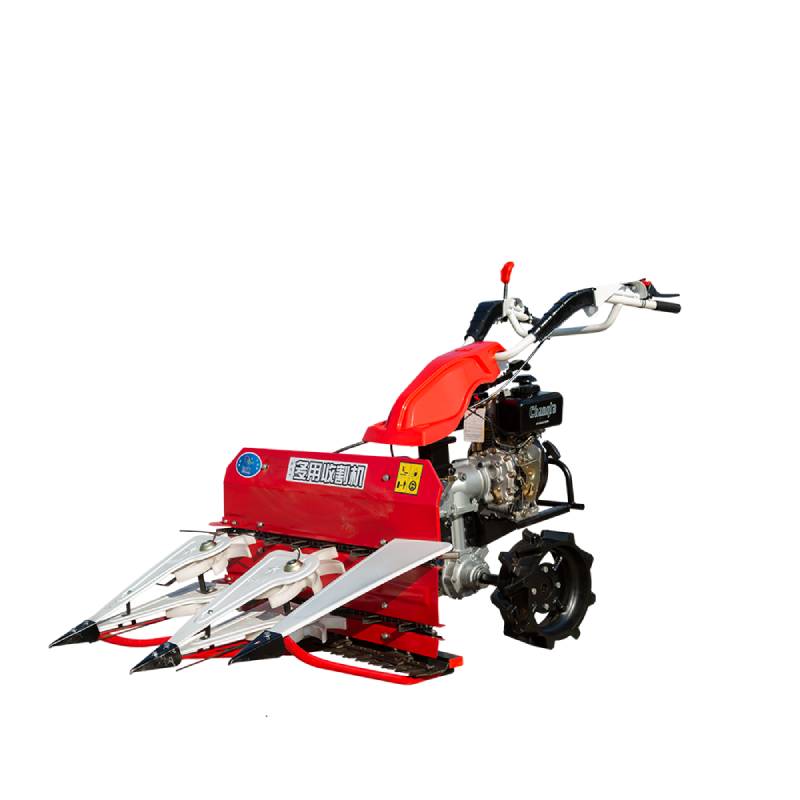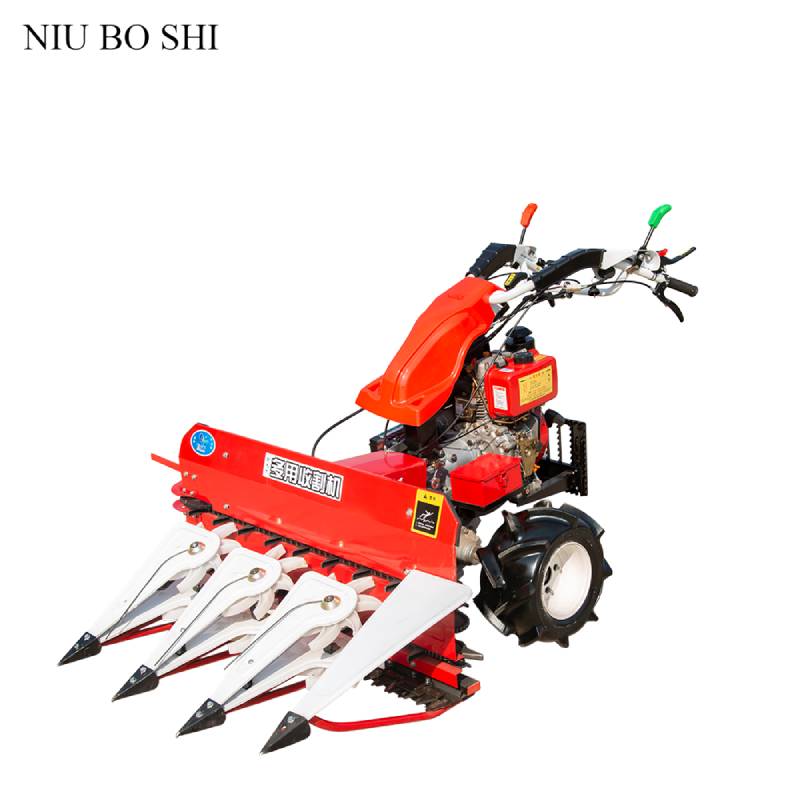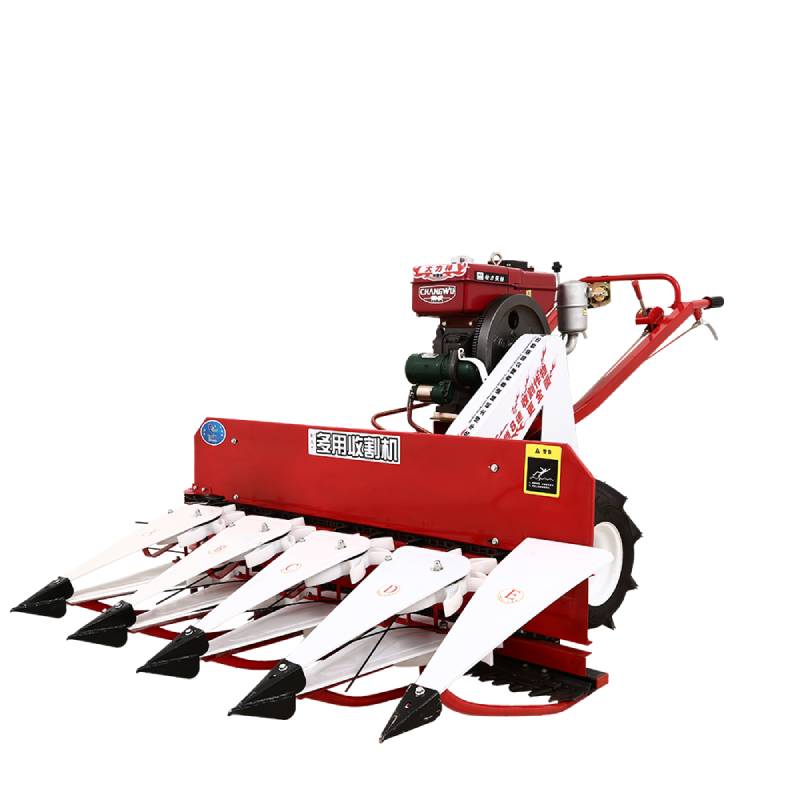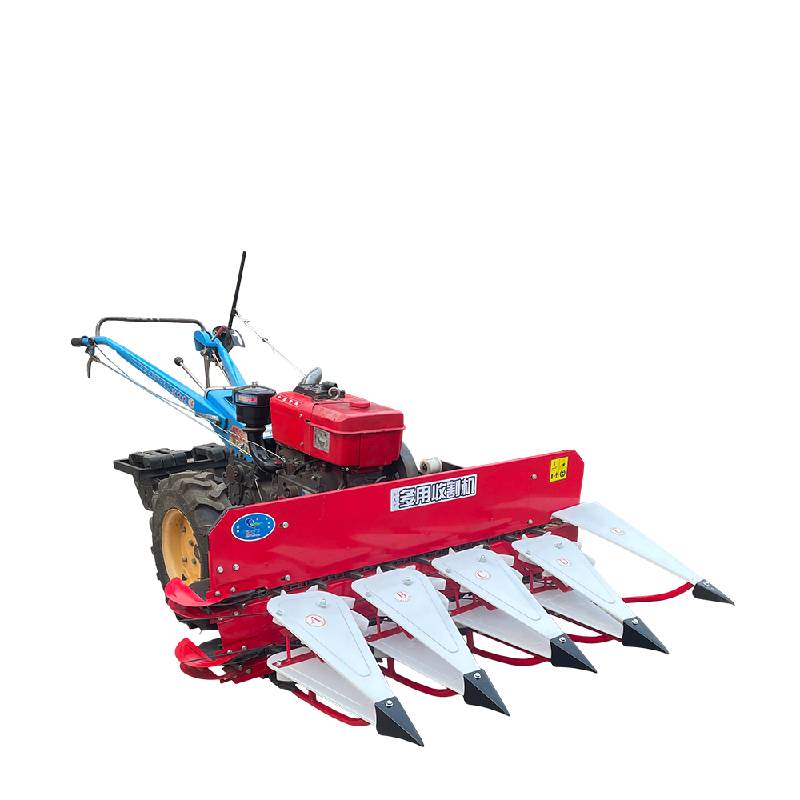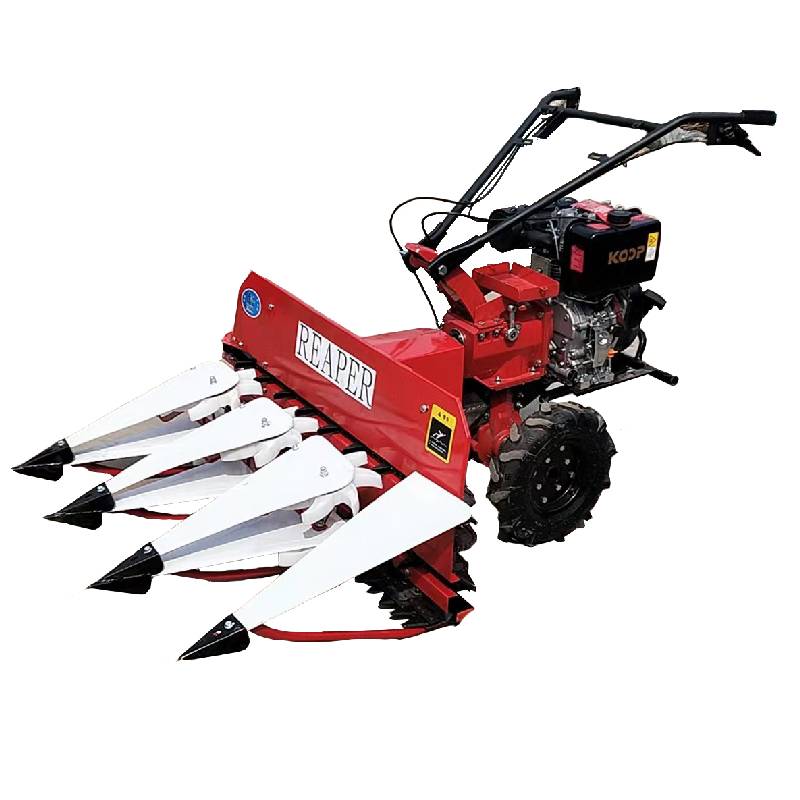Reaper Binder Machine: Boost Your Harvest Efficiency
Introduction to Reaper Binder Technology in Modern Agriculture
In the evolving landscape of agricultural machinery, the reaper binder stands as a pivotal innovation, bridging traditional harvesting methods with modern efficiency. This specialized agricultural machine is engineered to simultaneously cut standing crops and bind them into sheaves, significantly reducing manual labor and accelerating the harvesting process. For B2B stakeholders in the agricultural sector, understanding the intricate mechanics, operational advantages, and strategic deployment of these machines is crucial for optimizing crop yields and operational costs. The integration of advanced engineering principles ensures that today's reaper binders deliver unparalleled performance in diverse field conditions, from small-scale family farms to large commercial agricultural enterprises. Its role is indispensable in the harvesting of various cereal crops, including wheat, rice, barley, oats, and millet, making it a cornerstone technology for food security and agricultural productivity worldwide.
Modern agricultural operations demand not only speed but also precision and minimal crop loss. The sophisticated design of a reaper binder addresses these requirements head-on, offering a robust solution that automates two critical harvesting stages: cutting and binding. This dual functionality not only saves considerable time but also ensures that harvested crops are neatly bundled, simplifying subsequent processes such as transportation, threshing, and storage. The economic impact for commercial farms is profound, translating into reduced operational expenses, enhanced labor efficiency, and a faster turnaround time for planting subsequent crops, thereby maximizing land utilization and overall farm profitability.
Evolution and Industry Trends of Reaper Binders
The history of harvesting machinery is a testament to human ingenuity, evolving from rudimentary sickles to highly mechanized equipment. The reaper machine, in its earlier forms, revolutionized crop cutting, but it was the addition of the binding mechanism that truly transformed efficiency. Early models were often horse-drawn, with complex gearing systems to manage both cutting and bundling. Today, the industry is witnessing significant trends driven by technological advancements and global agricultural demands.
Key Industry Trends:
- Automation and Smart Farming: The integration of GPS, sensor technology, and even AI-driven systems is enhancing precision agriculture. Future reaper binder models may feature autonomous operation capabilities, optimizing harvest paths and minimizing fuel consumption.
- Miniaturization and Versatility: The rise of the mini reaper binder caters to small and medium-sized farms, offering agility in confined spaces and reducing capital investment. These smaller units are often designed for multi-crop adaptability, expanding their utility.
- Sustainability and Efficiency: Manufacturers are focusing on developing more fuel-efficient engines and lighter, yet durable, materials to reduce the environmental footprint. This includes hybrid or electric models, aligning with global sustainability goals.
- Enhanced Durability and Reduced Maintenance: Advanced material science and engineering techniques lead to machines with longer service lives and fewer maintenance requirements, a critical factor for B2B buyers seeking lower total cost of ownership.
- Ergonomics and Operator Comfort: Modern designs prioritize operator comfort and safety, reducing fatigue during long harvesting days, which in turn improves operational efficiency and reduces human error.
These trends collectively point towards a future where harvesting machinery is not only more productive but also more intelligent, sustainable, and accessible, ensuring agricultural systems can meet the growing global food demand. The continuous innovation within the reaperbinder segment underscores its enduring importance in the agricultural supply chain.
Technical Specifications and Core Components
The effectiveness of a reaper binder is fundamentally dictated by its technical specifications and the robust design of its core components. Understanding these elements is paramount for procurement professionals and agricultural engineers. The Hercules reaper, for instance, exemplifies a modern approach to combining power, precision, and durability. Its design integrates several critical subsystems that work in concert to achieve seamless crop harvesting and binding.
Key Components and Their Functions:
- Cutting Bar Mechanism: This is the primary component responsible for severing the crop stalks. It typically features reciprocating blades (sickle bar) that move rapidly across stationary fingers, ensuring a clean cut close to the ground. Material quality (e.g., high-carbon steel) and precision machining are crucial for long-term sharpness and resistance to wear.
- Reel Mechanism: Positioned above the cutting bar, the reel helps to push standing crops into the cutting mechanism and then guides the cut stalks onto the platform or conveyor. Adjustable reel speed and height are essential for adapting to different crop heights and densities.
- Conveyor/Platform: Once cut, crops are transported to the binding mechanism via a conveyor belt or platform. The design ensures smooth and continuous flow, preventing blockages and crop damage.
- Binding Knotter: This is the sophisticated heart of the binding process. It gathers a predetermined amount of cut crop, compresses it into a sheaf, ties it securely with twine, and then ejects the bound sheaf. The precision of the knotter mechanism is critical to prevent loose bundles and ensure efficient handling. Components like the bill hook, twine holder, and knife are engineered for high-cycle reliability.
- Engine/Power Unit: Providing the motive force for all operations, the engine (typically diesel for larger units, gasoline for smaller ones) must deliver consistent power and torque, often optimized for fuel efficiency and low emissions. The Hercules reaper, for instance, uses a robust engine designed for sustained heavy-duty operation.
- Transmission and Drive System: This transfers power from the engine to the cutting, reeling, conveying, and binding mechanisms, as well as the wheels for locomotion. Durable gears, belts, and chains are vital for longevity.
Product Specification: Hercules Reaper
| Parameter | Specification (Hercules Reaper) |
|---|---|
| Model Name | Hercules Reaper 4G-100/120/140 |
| Cutting Width | 100/120/140 cm (variable based on model) |
| Harvesting Capacity | 0.8-1.5 acres/hour (depending on crop & model) |
| Engine Type | Diesel, Air-cooled, Single Cylinder |
| Engine Power | 4.5-6.0 HP (approx. 3.3-4.4 kW) |
| Fuel Consumption | Approx. 0.8-1.2 L/hour |
| Binding Material | Agricultural Twine (jute or polypropylene) |
| Weight (Approx.) | 200-250 kg |
| Operational Speed | 2-4 km/hour |
| Adjustable Stubble Height | 5-15 cm |
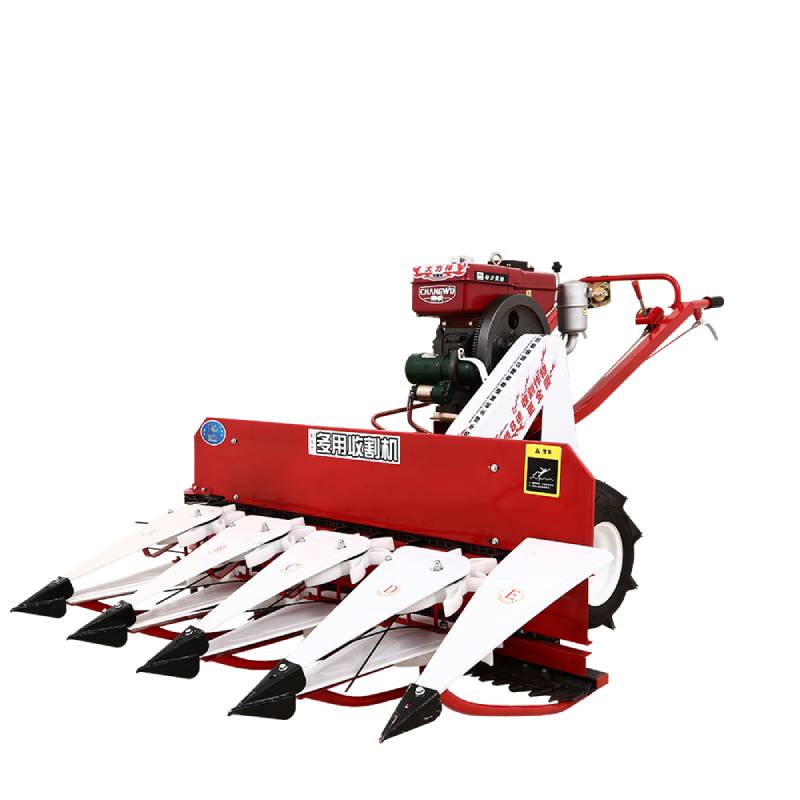
These specifications highlight the careful balance between power, precision, and operational efficiency that defines a high-quality reaperbinder, making it a valuable asset for any modern agricultural operation. The selection of robust materials and the precision of component assembly directly contribute to the machine's overall performance, service life, and return on investment for farmers.
Manufacturing Process of Advanced Reaper Binders
The production of a high-performance reaper binder involves a sophisticated manufacturing process that prioritizes durability, precision, and operational reliability. From raw material sourcing to final assembly and testing, each stage adheres to stringent quality control standards, ensuring the final product meets the demanding conditions of agricultural use. The target industries for these machines are primarily agriculture, focusing on crop harvesting and post-harvest processing.
Process Flow and Key Stages:
Material Selection & Sourcing
High-grade structural steel for frames, tempered carbon steel for cutting blades, heat-treated alloys for gears, and durable polymers for certain non-load-bearing components. Materials are selected for superior strength, wear resistance, and corrosion resistance, essential for outdoor agricultural machinery.
Component Fabrication
Involves precision casting for complex parts like gear housings, forging for high-stress components like shafts and axles, and extensive CNC machining for critical components (e.g., cutting bar elements, knotter parts) to achieve exact tolerances. Laser cutting and welding are used for frame construction.
Surface Treatment & Finishing
Components undergo processes such as heat treatment (e.g., carburizing, induction hardening) to enhance hardness and wear resistance, and protective coatings (e.g., powder coating, galvanization) for superior corrosion resistance against moisture, dust, and agricultural chemicals.
Assembly
Modular assembly lines integrate the engine, transmission, cutting bar, reel, conveyor, and knotter mechanisms. Sub-assemblies are pre-tested before final integration. Robotics and skilled technicians ensure precise alignment and secure fastening of all parts.
Quality Control & Testing
Adherence to international standards like ISO 9001 (Quality Management) and relevant agricultural machinery safety standards. Functional testing of all mechanisms, engine performance checks, vibration analysis, and simulated field trials ensure optimal operation. Service life projections typically exceed 5,000 operational hours with proper maintenance.
Packaging & Distribution
Machines are carefully packaged to prevent damage during transit, often partially disassembled to optimize shipping volume. Robust logistics ensure timely delivery to agricultural distributors and end-users worldwide.
Advantages in Typical Application Scenarios:
- Operational Efficiency: The integrated cutting and binding process of a reaperbinder reduces labor requirements by up to 70% compared to manual harvesting, translating into significant cost savings and faster field clearance.
- Crop Protection: Precise cutting and gentle binding minimize crop shattering and loss, preserving the quality and quantity of the harvest. This is particularly crucial for delicate grains.
- Durability in Harsh Environments: High-quality materials and protective coatings ensure the machine withstands abrasive dust, moisture, and extreme temperatures common in agricultural settings, extending its operational lifespan.
- Adaptability: Adjustable settings for cutting height and binding tension allow the machine to be optimized for various crop types and field conditions, maximizing versatility for farmers.
The meticulous manufacturing and engineering excellence behind each reaper machine are what empower farmers to achieve higher productivity and greater profitability.
Application Scenarios and Operational Efficiency
The versatility of the reaper binder makes it an invaluable asset across a spectrum of agricultural operations. Its primary function is the efficient harvesting of various standing crops, making it indispensable for farms focused on cereal grain production. Understanding the specific application scenarios provides insight into its economic and operational advantages.
Typical Application Scenarios:
- Wheat Harvesting: In major wheat-producing regions, the reaper binder significantly speeds up harvest, allowing farmers to gather crops quickly before adverse weather conditions set in. The neatly bound sheaves are easy to transport and store, reducing post-harvest losses.
- Rice Paddy Fields: Specially adapted models with wider tracks or flotation devices can operate effectively in muddy paddy fields, crucial for rice cultivation. The machine's ability to cut and bind minimizes damage to the delicate rice grains and simplifies the drying process.
- Barley and Oat Harvesting: Similar to wheat, barley and oats are efficiently processed. The machine's precision cutting helps maximize yield by cutting closer to the ground, while the binding ensures easy handling for subsequent threshing.
- Millet and Sorghum Harvesting: For these smaller grains, the fine-tuned cutting and binding mechanisms ensure minimal seed loss, which is a common challenge with less precise harvesting methods.
- Seed Production Farms: In seed production, maintaining the purity and integrity of the crop is paramount. The gentle handling and precise binding of a high-quality reaperbinder help preserve seed viability and genetic purity.
- Small and Medium-Sized Farms: The advent of the mini reaper binder has made this technology accessible to smaller landholdings, enabling them to mechanize harvesting without the need for large, expensive combines, thereby increasing their competitiveness and reducing reliance on manual labor.
Operational Efficiency Benefits:
- Labor Cost Reduction: A single operator can perform the work of multiple manual laborers, drastically cutting labor expenses, which can account for a significant portion of farming costs.
- Time Savings: Mechanized harvesting is significantly faster, allowing farmers to complete harvests within optimal windows, reducing the risk of weather-related crop damage or spoilage.
- Reduced Crop Losses: Efficient cutting and binding mechanisms minimize shedding and scattering of grains, leading to higher overall yields.
- Consistent Sheaf Quality: Uniformly bound sheaves simplify subsequent handling, transportation, and threshing, improving the efficiency of the entire post-harvest process.
- Fuel Efficiency: Modern engines are designed for optimal fuel consumption, contributing to lower operating costs per acre, especially for a well-maintained reaper machine.
These benefits underscore why the integration of advanced reaperbinder technology is a strategic investment for agricultural businesses aiming for peak operational efficiency and sustainable growth.
Technical Advantages and Performance Metrics
Beyond basic functionality, the technical advantages of a superior reaper binder manifest in quantifiable performance metrics that directly impact a farm's productivity and profitability. These advantages are the result of continuous R&D, material science advancements, and precision engineering.
Key Technical Advantages:
- High-Precision Cutting Mechanism: Advanced sickle bar designs with hardened steel blades ensure a clean, low-stubble cut, maximizing the harvested portion of the crop. This reduces soil contamination in the harvest and promotes quicker regrowth for subsequent crops.
- Robust Knotter System: The reliability of the binding mechanism is paramount. Modern knotters are designed for minimal missed ties, capable of handling various twine types (jute, polypropylene) and ensuring consistently tight, durable sheaves under varying crop conditions. This directly impacts labor efficiency in post-harvest handling.
- Optimized Power-to-Weight Ratio: Engines are carefully selected to provide sufficient power for cutting and binding operations while maintaining a manageable overall machine weight. This enhances maneuverability, reduces soil compaction, and improves fuel efficiency.
- Adjustable Operating Parameters: Features like adjustable cutting height, reel speed, and binding tension allow operators to fine-tune the reaper machine for different crop types (e.g., tall wheat vs. short barley) and field conditions (e.g., lodged crops), ensuring optimal performance and minimal crop loss.
- Enhanced Durability and Longevity: Use of wear-resistant materials for critical components, along with advanced rust-proofing and bearing technologies, extends the operational life of the machine, reducing the frequency of replacements and maintenance costs.
- Safety Features: Modern designs incorporate safety guards, emergency stop mechanisms, and clear operational controls to protect the operator and prevent accidents, adhering to international safety standards for agricultural machinery.
Performance Metrics Overview:
- Harvesting Speed (acres/hour): A direct measure of efficiency. High-performance models like the Hercules reaper binder can achieve 0.8 to 1.5 acres per hour, depending on the cutting width and crop density.
- Fuel Efficiency (Liters/hour or Liters/acre): Critical for operating costs. Modern diesel engines typically consume 0.8-1.2 liters per hour, making them economical to run over long periods.
- Crop Loss Rate (%): A key indicator of harvesting quality. Optimal reaperbinder designs aim for less than 1-2% crop loss, significantly outperforming manual methods.
- Knotter Efficiency (% successful ties): Ideally, above 98%, ensuring almost all sheaves are perfectly bound and ready for subsequent handling.
- Maintenance Interval (hours/acres): Longer intervals between scheduled maintenance, typically several hundreds of operational hours, indicate robust design and high-quality components.
These quantifiable metrics provide a clear benchmark for assessing the value and return on investment of a specific reaperbinder model, reinforcing the decision-making process for B2B agricultural buyers.
Vendor Comparison: Choosing the Right Reaper Binder
Selecting the appropriate reaper binder is a critical business decision for agricultural enterprises. A comprehensive vendor comparison helps identify the machine that best aligns with specific operational needs, budget constraints, and long-term sustainability goals. While many manufacturers offer competitive products, key differentiators often emerge in terms of technical specifications, after-sales support, and overall value proposition. Here, we compare the Hercules Reaper with a typical market average reaperbinder, highlighting crucial factors.
Reaper Binder Comparison Table
| Feature/Parameter | Hercules Reaper (Example) | Typical Market Average |
|---|---|---|
| Engine Power (HP) | 4.5 - 6.0 HP Diesel | 3.5 - 5.0 HP Gasoline/Diesel |
| Cutting Width (cm) | 100 / 120 / 140 cm | 80 / 100 / 120 cm |
| Harvesting Capacity (acres/hour) | 0.8 - 1.5 | 0.5 - 1.0 |
| Fuel Efficiency (L/hr) | 0.8 - 1.2 | 1.0 - 1.5 |
| Knotter Efficiency (%) | >98% | 90-95% |
| Adjustable Stubble Height | Yes (5-15 cm) | Limited or Fixed |
| Frame Material | High-tensile, Corrosion-resistant Steel | Standard Steel |
| Warranty | 12-24 Months | 6-12 Months (Often limited) |
| Certifications | ISO, CE, Local Agricultural Standards | Basic Safety Certs |
Factors to Consider During Vendor Evaluation:
- Performance Reliability: Scrutinize published specifications and independent test results. Look for evidence of consistent performance under various crop and field conditions.
- Durability and Material Quality: Investigate the materials used for critical components. Higher-grade steel, robust bearings, and quality coatings translate to longer service life and less downtime.
- After-Sales Support & Spare Parts Availability: A strong network for service and readily available spare parts is crucial to minimize operational interruptions during critical harvest seasons. Companies like Hercules typically have established global distribution and support.
- Total Cost of Ownership (TCO): Beyond the initial purchase price, consider fuel efficiency, maintenance costs, expected lifespan, and potential resale value. A cheaper reaperbinder with high running costs or frequent breakdowns may prove more expensive in the long run.
- Technological Advancements: Evaluate whether the manufacturer incorporates modern features like improved ergonomics, enhanced safety mechanisms, and options for future upgrades.
By meticulously evaluating these factors, B2B buyers can make informed decisions that ensure long-term productivity and maximize their return on investment in agricultural machinery.
Customized Solutions and Adaptability
The diverse nature of global agriculture necessitates that machinery, particularly a specialized tool like the reaper binder, offers a degree of customization and adaptability. While standard models cater to a broad range of applications, specific farm sizes, crop varieties, soil types, and climate conditions often require tailored solutions to achieve peak performance. Manufacturers who excel in B2B offerings understand this need and provide options for modification.
Areas for Customization and Adaptability:
- Cutting Width Variations: While standard models come in common widths (e.g., 100cm, 120cm, 140cm), some manufacturers can provide custom widths to match specific field sizes, row spacing, or existing farm equipment. For example, a mini reaper binder might be adjusted for extremely narrow plots.
- Engine Specifications: Depending on fuel availability, altitude, or specific power requirements, engine types (gasoline, diesel) or power outputs can sometimes be customized. Some markets might require specific emission standards compliance which can be addressed through engine selection.
- Wheel and Track Options: For challenging terrains, such as very wet paddy fields or steep slopes, options like wider pneumatic tires, lugged wheels, or even rubber tracks can be integrated to improve traction and reduce soil compaction, transforming a standard reaper machine into a specialized tool.
- Binding Material Handling: While most machines use twine, specific applications or regional preferences might demand different binding materials or mechanisms. Customization can involve optimizing the knotter for particular twine types or bale sizes.
- Crop-Specific Adjustments: For unusually tall, short, or lodged crops, modifications to the reel design, conveyor system, or cutting bar angle can enhance performance and minimize crop loss.
- Safety and Ergonomic Enhancements: For regions with specific occupational safety regulations, additional safety guards, improved operator seating, or specialized control interfaces can be integrated into the reaperbinder design.
- Telematics and Connectivity: For large-scale operations moving towards smart farming, integration with GPS, telematics for performance monitoring, and remote diagnostics can be a valuable customization, often facilitated through partnerships with technology providers.
Benefits of Customization:
“Tailored agricultural machinery, like a bespoke reaperbinder, offers a significant competitive edge by perfectly matching equipment capabilities to unique farm requirements, leading to optimized yields and reduced operational inefficiencies that generic solutions cannot achieve.”
Engaging with a knowledgeable vendor that offers flexible manufacturing capabilities and a strong engineering team can transform a standard reaper machine into a precisely optimized tool, ensuring maximum return on investment for the discerning agricultural buyer. This approach minimizes the need for costly field modifications post-purchase and ensures the machine operates at its designed peak efficiency from day one.
Real-World Application Case Studies
The practical impact of a high-quality reaper binder is best illustrated through real-world application case studies. These examples demonstrate how the technology translates into tangible benefits for various agricultural operations, reinforcing its value proposition for B2B decision-makers. The Hercules reaper, for instance, has been deployed in diverse environments, showcasing its adaptability and efficiency.
Case Study 1: Large-Scale Wheat Farm in the Midwest, USA
- Client: AgriCorp, a commercial wheat farming operation managing over 2,000 acres.
- Challenge: Faced labor shortages during peak harvest season and inconsistent sheaf quality from older, semi-manual methods, leading to higher post-harvest handling costs.
- Solution: Deployed a fleet of Hercules reaperbinder units (140 cm cutting width) with enhanced engine power for sustained operation.
- Results:
- Labor Reduction: Reduced manual labor dependency by 60%, reallocating staff to other critical farm tasks.
- Harvest Speed: Increased overall harvesting speed by 35%, completing the harvest 10 days earlier than previous seasons, mitigating weather risks.
- Crop Loss: Recorded less than 1.5% crop loss, compared to 3-5% with previous methods, leading to an estimated 2% increase in salable yield.
- Cost Savings: Achieved a 20% reduction in total harvesting costs per acre within the first season due to labor efficiency and reduced waste.
Case Study 2: Smallholder Rice Farm in Southeast Asia
- Client: A cooperative of smallholder rice farmers, each managing 1-5 acres of paddy fields.
- Challenge: High reliance on manual labor for rice harvesting, which was time-consuming, physically demanding, and often led to significant post-harvest losses due to shattering and inconsistent bundling in wet conditions.
- Solution: The cooperative invested in several mini reaper binder units (100 cm cutting width) with specialized wider wheels for improved traction in muddy fields.
- Results:
- Labor Efficiency: Reduced the number of laborers needed for harvesting by 75% per acre, freeing up family members for other income-generating activities.
- Time to Harvest: Harvest time for a 2-acre plot was reduced from 3 days to less than a single day.
- Yield Improvement: Farmers reported a noticeable reduction in grain loss (estimated 5-7% improvement), leading to higher net yields.
- Income Increase: The combined effect of reduced labor costs and increased yield resulted in an average 15-20% increase in net income for participating farmers.
Case Study 3: Organic Millet Farm, Sub-Saharan Africa
- Client: An organic millet farm operating on 50 acres, focusing on sustainable practices.
- Challenge: Difficulty in cleanly harvesting millet due to its varied stalk height and susceptibility to shattering, coupled with limited access to modern farm machinery suitable for smaller grain crops.
- Solution: Implemented a Hercules reaperbinder with customized reel and cutting bar adjustments to handle varying millet heights and densities.
- Results:
- Minimized Shattering: Achieved an unprecedented low shattering rate, preserving valuable organic millet grains.
- Efficient Binding: Produced uniform sheaves, simplifying post-harvest drying and threshing processes crucial for organic certification.
- Increased Market Value: The consistent quality of the harvested and bound millet allowed the farm to command a higher price in specialized organic markets.
These case studies underscore the transformative potential of a reliable and efficient reaperbinder, demonstrating its ability to deliver significant operational improvements, cost savings, and enhanced crop quality across diverse agricultural contexts.
Ensuring Trust and Reliability: Quality & Support
For B2B buyers, the decision to invest in a reaper binder extends beyond mere technical specifications; it encompasses trust in the manufacturer's commitment to quality, reliability, and comprehensive support. A robust framework of certifications, warranties, and accessible customer service is paramount for building lasting partnerships.
Certifications and Authoritative References:
- ISO 9001:2015 Certification: Demonstrates adherence to international standards for quality management systems, ensuring consistent product quality and continuous improvement in manufacturing processes for every reaper machine.
- CE Marking: For products sold in the European Economic Area, CE marking signifies conformity with health, safety, and environmental protection standards.
- Local Agricultural Machinery Standards: Compliance with national or regional agricultural machinery safety and performance standards (e.g., ASAE in the US, IS in India) provides additional assurance of product suitability and safety.
- Industry Recognition: Awards or endorsements from reputable agricultural bodies or publications can serve as third-party validation of product excellence and innovation.
Warranty Commitments:
A comprehensive warranty reflects a manufacturer's confidence in their product. Typically, a high-quality reaperbinder will come with a minimum 12 to 24-month warranty covering manufacturing defects and major components. Extended warranty options or specialized coverage for critical parts might also be available, providing peace of mind and protecting the investment.
Lead Time and Fulfillment:
Efficient logistics and timely delivery are crucial, especially during planting and harvesting seasons. Reputable vendors provide clear lead time estimates (e.g., 4-6 weeks for standard models, longer for customized solutions) and reliable fulfillment processes, including international shipping and customs clearance support. They maintain robust supply chains to ensure component availability and efficient production cycles for the windrower and reaper machines.
Customer Support and After-Sales Service:
- Technical Assistance: Access to expert technical support for troubleshooting, operational guidance, and maintenance advice, often available via phone, email, or online portals.
- Spare Parts Availability: A readily accessible inventory of genuine spare parts is vital to minimize downtime. Many manufacturers offer online catalogs and expedited shipping for critical components.
- Training Programs: Provision of operational and maintenance training for farm personnel ensures that the machine is used correctly and maintained optimally, maximizing its lifespan and efficiency.
- Service Network: A widespread network of authorized dealers and service centers ensures that professional support is available locally, reducing travel time and service costs.
Companies like Hercules are committed to these pillars of trust and reliability, ensuring that their reaper binder products deliver not just performance, but also enduring value and peace of mind to their agricultural partners.
Frequently Asked Questions (FAQ)
A1: A reaper binder is primarily designed for harvesting cereal crops such as wheat, rice, barley, oats, millet, and sorghum. Its adjustable mechanisms allow for efficient operation across various stalk heights and densities.
A2: A reaper binder cuts and binds crops into sheaves, which then require separate threshing. A combine harvester, on the other hand, performs all operations—reaping, threshing, and winnowing—in a single pass, separating grains from straw directly in the field. Reaper binders are generally smaller, less expensive, and more suitable for smaller farms or crops that require bundled drying.
A3: Fuel consumption varies by engine size and operational conditions. For example, the Hercules reaper machine typically consumes between 0.8 to 1.2 liters of diesel per hour, making it an efficient option for extended use.
A4: Regular maintenance includes checking and tightening bolts, lubricating moving parts, cleaning the cutting bar and knotter mechanism, checking engine oil and air filters, and inspecting belts and chains for wear. Manufacturers provide detailed maintenance schedules, often recommending checks every 50-100 operational hours.
A5: Yes, a mini reaper binder is specifically designed for small plots, terraced fields, and areas inaccessible to larger machinery. Its compact size and maneuverability make it highly effective in irregular and confined spaces, significantly boosting productivity for smallholder farmers.
A6: With proper maintenance and operation, a well-built reaperbinder can have a service life exceeding 5,000 operational hours, often translating to 10-15 years or more for average farm usage. High-quality materials and manufacturing contribute significantly to this longevity.
Conclusion
The reaper binder remains a cornerstone of efficient agricultural operations, offering a critical solution for crop harvesting and binding. Its evolution, driven by technological advancements and the demand for increased productivity, positions it as a vital investment for modern farms. From detailed technical specifications and robust manufacturing processes to diverse application scenarios and demonstrable performance advantages, the value proposition of a high-quality reaper machine is clear.
By meticulously evaluating vendor capabilities, understanding customization options, and reviewing real-world case studies, B2B decision-makers can confidently select a reaperbinder that not only meets their immediate operational needs but also contributes to long-term sustainability and profitability. The commitment to quality, backed by rigorous testing, comprehensive warranties, and dedicated after-sales support, ensures that this essential agricultural machinery continues to deliver unparalleled efficiency and reliability in the field.
References
- FAO. (2020). The State of Food and Agriculture 2020. Food and Agriculture Organization of the United Nations.
- Smith, J. A. (2018). Mechanization in Agriculture: Impact on Labor and Productivity. Journal of Agricultural Engineering, 45(2), 112-125.
- Agricultural Machinery Industry Trends Report. (2022). Global Market Insights.
- ISO 9001:2015 - Quality management systems - Requirements. International Organization for Standardization.
- Kumar, R. P. (2019). Design and Development of a Multi-Crop Reaper-Binder. International Journal of Scientific & Engineering Research, 10(4), 110-116.
Latest news
-
Cane Harvester that Versatile Agricultural Harvesting Solutions from Hebei NiuboshiNewsAug.22,2025
-
Wheat Harvester that Advanced Crop Harvesting Solutions from Hebei NiuboshiNewsAug.22,2025
-
Combine Harvester Small that Revolutionizing Agriculture with Compact Harvesting SolutionsNewsAug.22,2025
-
Forage Harvester that Efficient Machinery for Animal Feed ProductionNewsAug.22,2025
-
Rice Reaper Machine that Comprehensive Harvesting Solutions for Global AgricultureNewsAug.22,2025
-
When to Upgrade Your Old Forage HarvesterNewsJun.05,2025
